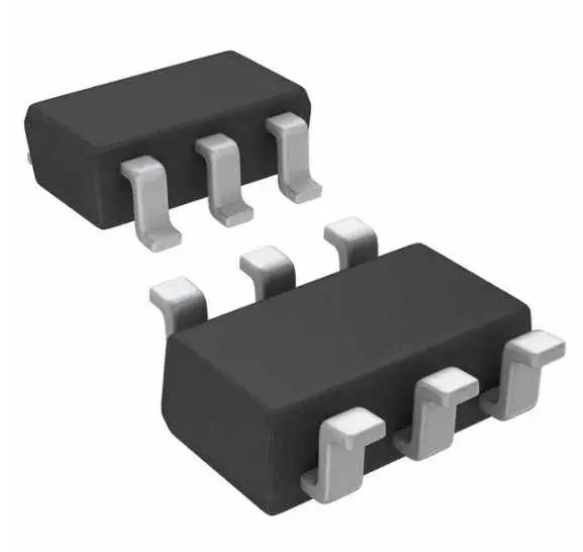PCT2075
I2C-bus Fm+, 1 C accuracy, digital temperature sensor and
thermal watchdog
Rev. 10 — 20 November 2017
Product data sheet
1. General description
The PCT2075 is a temperature-to-digital converter featuring 1 C accuracy over 25 C
to +100 C range. It uses an on-chip band gap temperature sensor and Sigma-Delta
A-to-D conversion technique with an overtemperature detection output that is a drop-in
replacement for other LM75 series thermal sensors. The device contains a number of data
registers: Configuration register (Conf) to store the device settings such as device
operation mode, OS operation mode, OS polarity and OS fault queue; temperature
register (Temp) to store the digital temp reading, set-point registers (Tos and Thyst) to
store programmable overtemperature shutdown and hysteresis limits, and programmable
temperature sensor sampling time Tidle, that can be communicated by a controller via the
2-wire serial I2C-bus Fast-mode Plus interface.
The PCT2075 also includes an open-drain output (OS) which becomes active when the
temperature exceeds the programmed limits. The OS output operates in either of two
selectable modes: OS comparator mode or OS interrupt mode. Its active state can be
selected as either HIGH or LOW. The fault queue that defines the number of consecutive
faults in order to activate the OS output is programmable as well as the set-point limits.
The PCT2075 can be configured for different operation conditions. It can be set in normal
mode to periodically monitor the ambient temperature, or in shut-down mode to minimize
power consumption.
The temperature register always stores an 11-bit two’s complement data, giving a
temperature resolution of 0.125 C. This high temperature resolution is particularly useful
in applications of measuring precisely the thermal drift or runaway. When the device is
accessed the conversion in process is not interrupted (that is, the I2C-bus section is totally
independent of the Sigma-Delta converter section) and accessing the device continuously
without waiting at least one conversion time between communications will not prevent the
device from updating the Temp register with a new conversion result. The new conversion
result is available immediately after the Temp register is updated. It is also possible to
read just one of the temperature register bytes without lock-up.
The PCT2075 powers up in the normal operation mode with the OS in comparator mode,
temperature threshold of 80 C and hysteresis of 75 C, so that it can be used as a
stand-alone thermostat with those pre-defined temperature set points. The default
set points can be modified during manufacture and ordered under custom part number.
There are three selectable logic address pins with three logic states so that 27 8-pin
devices or three 6-pin devices can be connected on the same bus without address
conflict.
�PCT2075
NXP Semiconductors
I2C-bus Fm+ digital temperature sensor and thermal watchdog
2. Features and benefits
Pin-for-pin replacement for LM75 series but allows up to 27 devices on the bus
Power supply range from 2.7 V to 5.5 V
Temperatures range from 55 C to +125 C
Frequency range 20 kHz to 1 MHz with SMBus time-out to prevent hanging up the bus
1 MHz Fast-mode Plus 30 mA SDA drive allows more devices on the same bus but is
backward compatible to Fast-mode and Standard-mode
11-bit ADC that offers a temperature resolution of 0.125 C
Temperature accuracy of:
1 C (max.) from 25 C to +100 C
2 C (max.) from 55 C to +125 C
Programmable temperature threshold and hysteresis set points during operation
Supply current of Thys. Otherwise, the OS
output state is undefined.
PCT2075
Product data sheet
All information provided in this document is subject to legal disclaimers.
Rev. 10 — 20 November 2017
© NXP Semiconductors N.V. 2017. All rights reserved.
14 of 37
�PCT2075
NXP Semiconductors
I2C-bus Fm+ digital temperature sensor and thermal watchdog
7.7 OS fault queue
Fault queue is defined as the number of faults that must occur consecutively to activate
the OS output. It is provided to avoid false tripping due to noise. Because faults are
determined at the end of data conversions, fault queue is also defined as the number of
consecutive conversions returning a temperature trip. The value of fault queue is
selectable by programming the two bits B4 and B3 (OS_F_QUE[1:0]) in register Conf.
Notice that the programmed data and the fault queue value are not the same. Table 17
shows the one-to-one relationship between them. At power-up, fault queue data = 0 and
fault queue value = 1.
Table 17.
Fault queue table
Fault queue data
Fault queue value
OS_F_QUE[1]
OS_F_QUE[0]
Decimal
0
0
1
0
1
2
1
0
4
1
1
6
7.8 Shutdown mode
The device operation mode is selected by programming bit B0 (SHUTDOWN) of register
Conf. Setting bit SHUTDOWN to logic 1 puts the device into shutdown mode. Resetting bit
SHUTDOWN to logic 0 returns the device to normal mode.
In shutdown mode, the PCT2075 draws a small current of
很抱歉,暂时无法提供与“PCT2075GVX”相匹配的价格&库存,您可以联系我们找货
免费人工找货- 国内价格
- 1+2.99000
- 10+2.76000
- 30+2.71400
